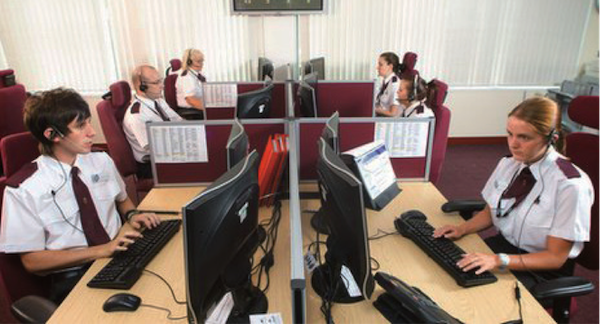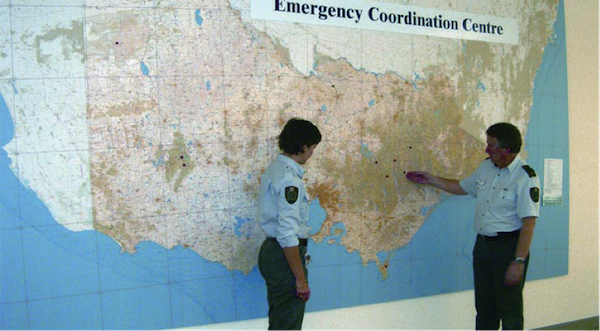THE UNITED KINGDOM
Just Call 999 when You Need Help

The UK has professional agents who receive the reports and deliver them to the police, fire department, or other emergency service departments rather than judging which department would best satisfy the needs of the reporter. 999 is the main emergency telephone number citizens use when they see help due to a crime or face a fire. 999 was the world’s first emergency telephone number consisting of only three numbers. The system designated the number to consist of 9s because 9, at the time, was the easiest number to dial. Moreover, when the bombings of the London subway and bus system happened, the government requested cooperation from telecommunication companies for its Access Overload Control. The system blocks general public phone calls to ensure a clear connection with a 999 operator and so that emergency departments receive phone calls faster. If a citizen made a nuisance call, (s)he faced up to 6 months of prison labor or up to a 9 million won monetary penalty as well as being sued for damages. Looking at Korea, the nation has 13 emergency phone numbers including 119 and 112. Using 13 different numbers prevents the main agents of 119 and 112 from receiving enough funding. Last August in Busan, when torrential rain fell, many senior citizens couldn’t get any help battling the floods since the 119 and 112 departments were swamped with calls. Now, it’s time for Korea to consider a true safety net.
GERMANY
Safety Education Makes Safe Society

Germany puts a great emphasis on safety education. Especially, there are two unique safety education operating in Germany: bicycle education and swimming education. In terms of bicycle education, students are grouped into first and second grade students and third and fourth grade students and taught how to ride a bicycle safely on the road. What’s unique about this is that the whole education is done with the cooperation of parents, the school, police officers, and the local government. In fact, some portions of the programme for third and fourth grade students is conducted by the police officers while the lower grade students get help from teachers or parents. Through education, children raise their awareness of traffic regulations, habituate themselves with always wearing a helmet, and gain an increased sense of safety. German students aged 10~16 must obtain a certificate of water-safety completion. Usually the safety education starts from primary school, grade 2 and continues till 8th or 9th grade. Students can finish their safety once they have mastered the last level of swimming education: life saving. Rather than depending on special safeguards, everyone knows how to save themselves in cases of tragedy like an accident or disaster. This sense of security ensures that citizens will not only ensure their own safety, but also hold out a helping hand to somebody needing assistance or immediate help. Once again, safety education makes safe society.
AUSTRALIA
Smart Way of Preparing Disasters

Australia operates a nationwide disaster preparation system that utilizes the dramatic increase of smart phones and social network services. In particular, there is the Emergency 2.0 program. With its more known title of ‘Geospatial & Social Media Project,’ it offers information such as flood warnings and evacuation procedures through social networks like Twitter and Facebook in real time. The Integrated Management Center checks weather data collected by satellite and field reports and from postings on a variety of websites. Based on the data, it shares information about blocked routes, the location of damaged facilities, and how much and how fast support is being provided to citizens. One of the advantages of this program is its uses of social networks; that is, it enables two-sided communication rather than merely delivering a certain perspective. In other words, citizens are also actively taking part in the sharing of useful information when a disaster occurs. Regular citizens can inform others about situations on their own social network spaces. Thanks to technology, people can easily access accurate and timely information and can evacuate not only in advance of tragedy but also during the disaster. The Sewol ferry disaster, which occurred at the beginning of 2014, resulted in the loss of hundreds of student lives. However, lots of students who boarded the ferry reported their emergent situation in real time via their social network services. If the central government or at least the emergency department had had an active “pragmatic” networking service, the horrific accident might have had a slightly better outcome.
JAPAN
Forewarned is Forearmed

Japan is located in the circum-Pacific orogenic zone which has a four crust border at its point of contact. As a result, natural disasters such as earthquake happen both frequently and strongly. Therefore, Japan is the best misfortune equipped nation. First of all, every building is earthquake-resistant, which prevents people from injury due to flying items. In 2005, when a train ran off the track crashed into an apartment building, the building didn’t collapse whereas the train was totally dented. The buildings are strong enough and can be considered true shelters. By extension, manuals for a catastrophe are thoroughly laid out for all to read. Japanese always bear disasters in mind and put forth sincere effort on safety education by offering a variety of work-study programs even before school-age to let people of all ages acquire survival skills naturally. For instance, the local government uses popular characters to ease children’s understanding and increase familiarity. From kindergarten, kids are trained obligatorily at experience centers in all parts of the country, and the training continues as they grow. Moreover, this practical practice-centered education allows young children to receive rescue-recovery discipline 4 hours a week till secondary school age. Students also learn how to swim as a part of their compulsory physical education program. Japan is an exemplary case for placing greater emphasis on a nation’s security than cost-cutting. Since most catastrophes are unavoidable, being equipped with disaster-resistant facilities and raising individuals’ ability to pull through difficulties should be top priority for any government.


